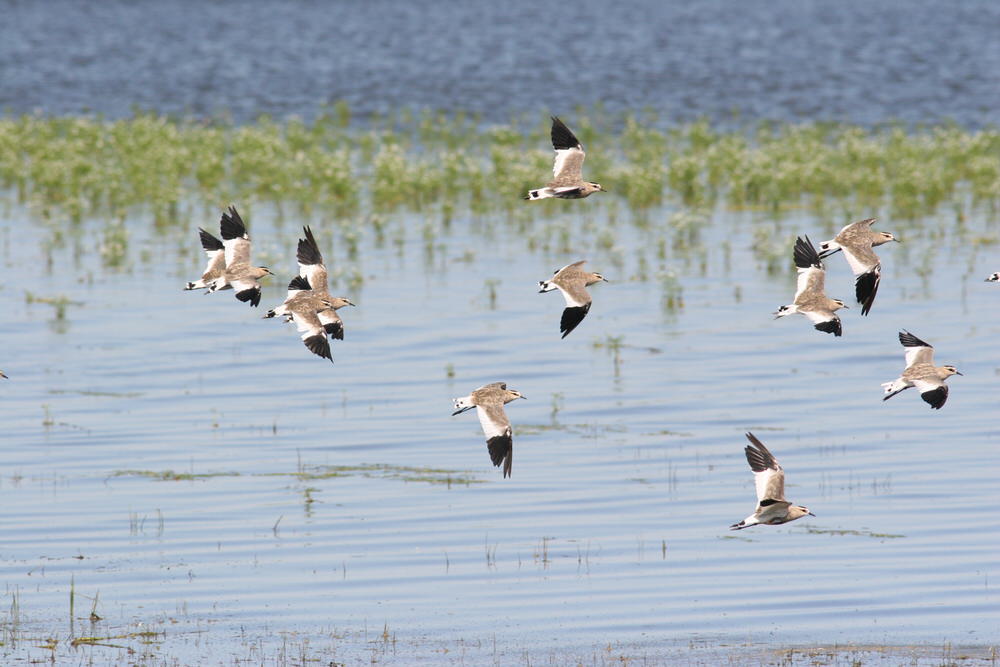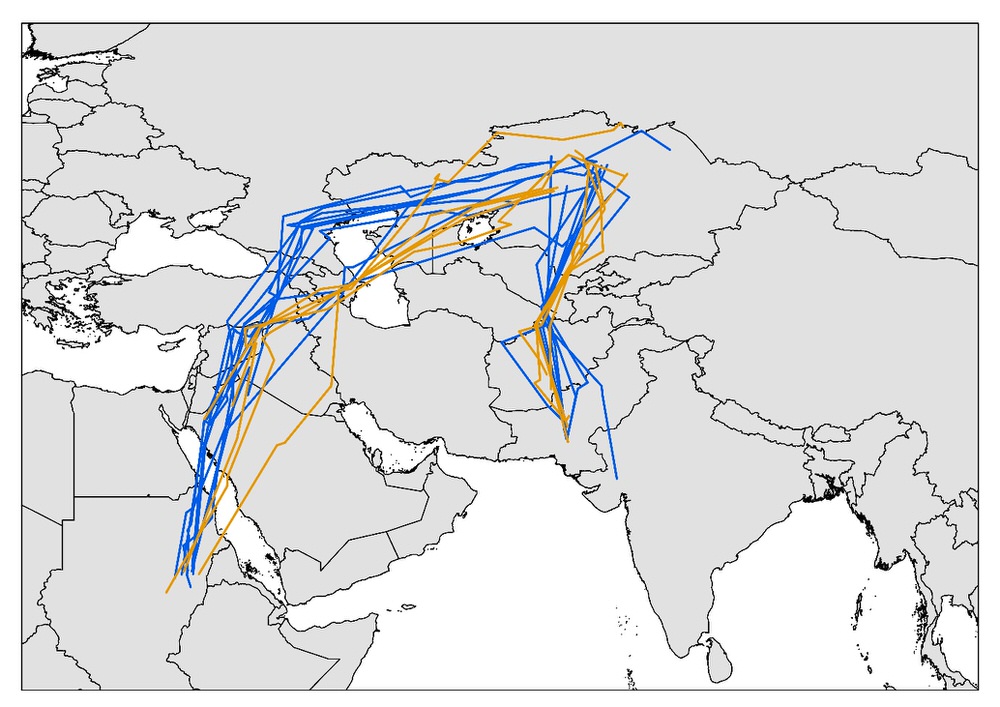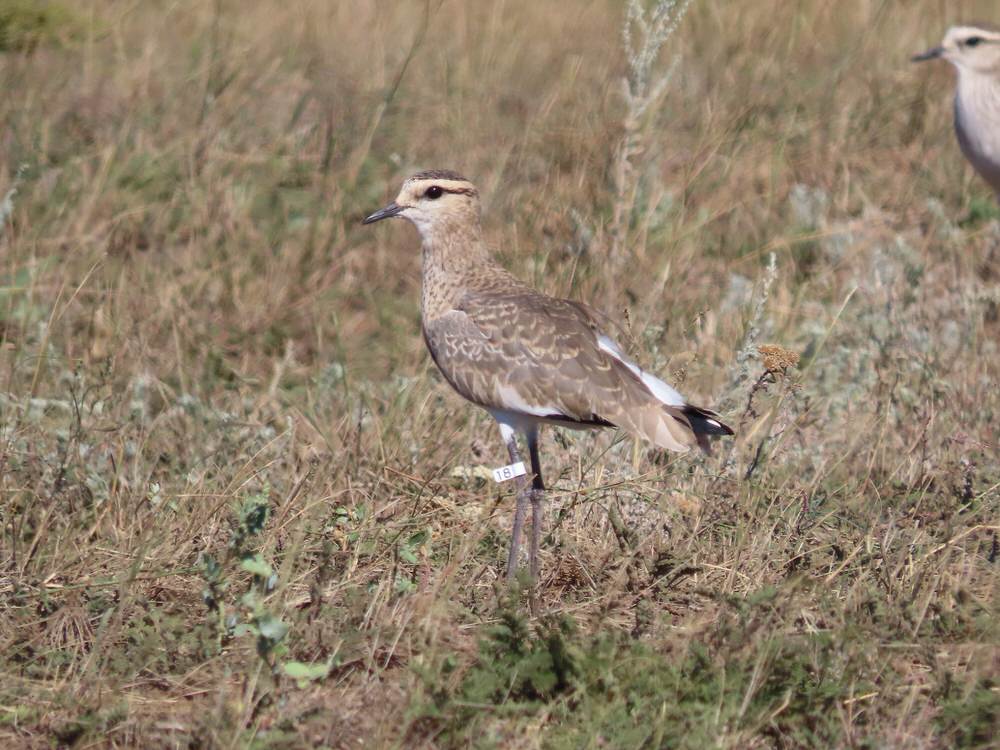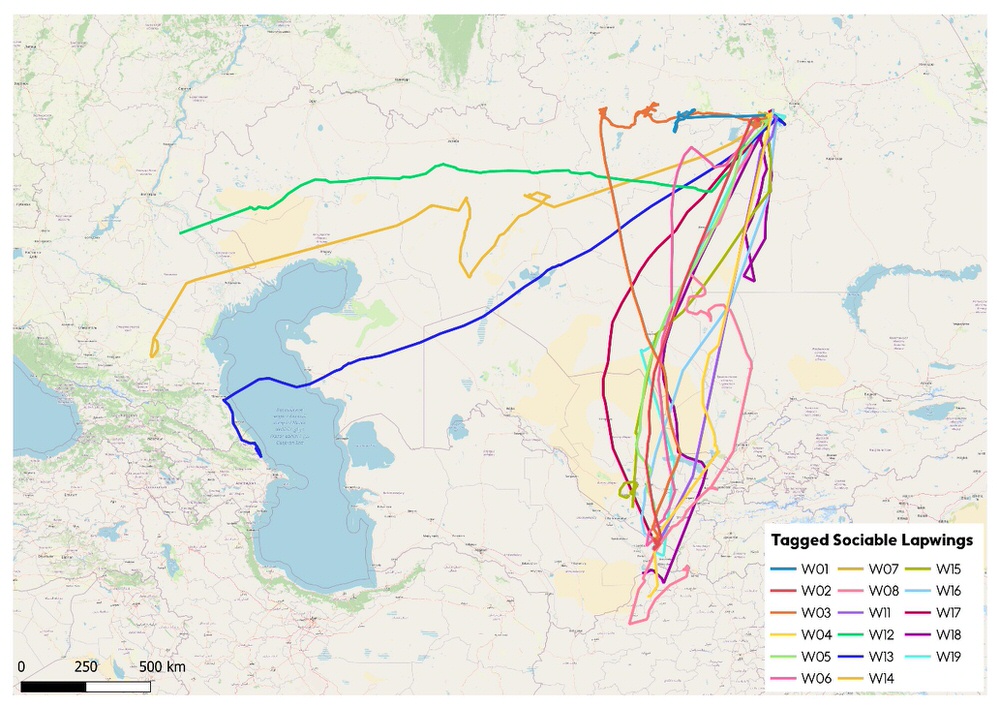Tracking Sociable Lapwings – your help required
The Sociable Lapwing Vanellus gregarius is the most threatened bird in the OSME region and is the only species listed as Critically Endangered by BirdLife International. The Slender-billed Curlew Numenius tenuirostris is also categorised as Critically Endangered, although there are no confirmed records since 1995, and the species is almost certainly extinct – an outcome we definitely don’t want to see for the Sociable Lapwing!

Since 2004 the Sociable Lapwing has been the subject of intensive research and conservation effort by many organisations across the species’ range, including numerous BirdLife International partners, especially the RSPB and the Association for the Conservation of Biodiversity in Kazakhstan (ACBK). Adult and first year survival rates have been shown to be low and are the likely cause of the witnessed population declines. Furthermore, satellite tracking studies have identified the general migration routes that Sociable Lapwings take, and it is known that illegal killing of the species occurs, especially in parts of the Middle East.

In Kazakhstan, much of the research has focussed on the area around the town of Korgalzhyn some 120 km south-west of the nation’s capital city of Astana. Comprehensive surveys covering some 20,000km2 were undertaken between 2005-12, with the number of nests ranging from 36-126 in any given year. Surveys were repeated in 2018 and 2019 which recorded nine and 15 nests respectively (a decline of 58-88%). This alarming population decline led to the development of a new conservation project to investigate possible conservation measures and to deploy the latest tracking technology to learn more about Sociable Lapwing movements and habitat use.
In May 2022, six adult Sociable Lapwings were tagged at the nest with a further 12 (four adults and eight juveniles) birds tagged during the post-breeding period (July-August). The tags were GPS/GSM tags and were initially set to send signals at hourly intervals with the settings subsequently adjusted according to battery power and the specific need to receive detailed locations to inform further catching. All birds were also ringed with a numbered leg flag (above the knee) that is clearly visible in the field.

Of the 18 tags fitted during 2022, 17 have provided regular data, often on a daily basis. During the post-breeding period (July-August) most of the tagged birds stayed within the core study area usually no more than 50km from the town of Korgalzhyn. Locations of the birds derived from the tag data are incredibly accurate and the field teams were able to observe individuals and their associated flocks on a regular basis. In early September most of the tagged birds started to make initial short distance movements prior to their main migration. So far, many of the tagged birds have opted to take the southern migration route and are currently at the known key staging site of Tallymerjen on the Uzbekistan/Turkmenistan border. Some tags are yet to transmit data and their most recent transmissions suggest they could be taking the western route.

How can you help?
Although we are receiving good location data from the tags so far, there are a number of places along the migration route and across the wintering grounds where we are expecting to only get sporadic information. The project team are really keen to get information on any sightings of Sociable Lapwings. If you are lucky enough to see any Sociable Lapwings then please check the birds carefully and see if you can observe any coloured leg flags. If so, please try and read the two-digit code on the flag (without disturbing the birds). In addition, any information on the number of birds in the flock, the number of birds flagged and a specific location of the birds (GPS co-ordinate or a dropped pin using Google maps) would be of immense value to the project team.
Any information should be sent to Ruslan Urazaliyev (ruslan.urazaliyev@gmail.com) and Rob Sheldon (vanellus1970@yahoo.co.uk).
You can learn more about previous work on tracking Sociable Lapwings via the Wader Tales blog: https://wadertales.wordpress.com/2021/01/03/following-sociable-lapwings/
Acknowledgements
This work was funded by Tengizcevroil. Ruslan Urazaliyev is also part-funded by Swarovski Optik, the Sociable Lapwing Species Champion to the BirdLife Preventing Extinctions Programme.
